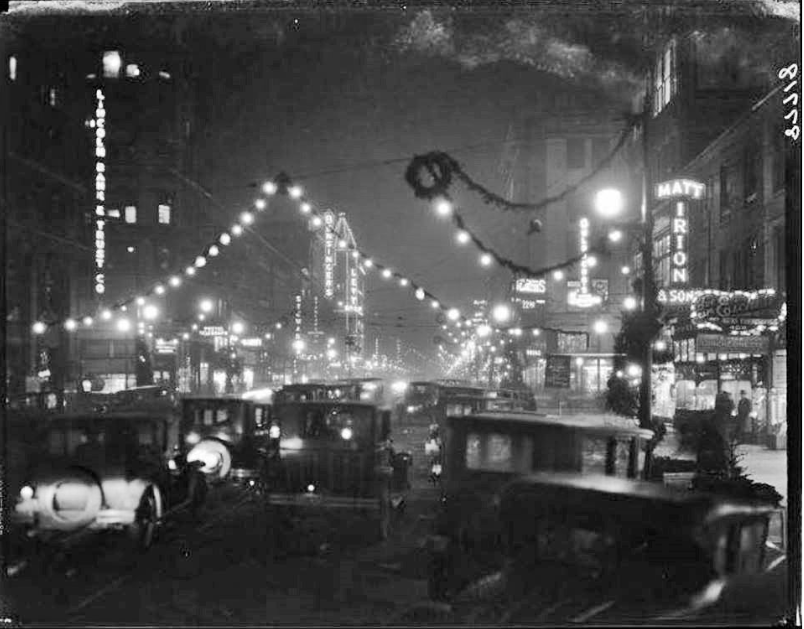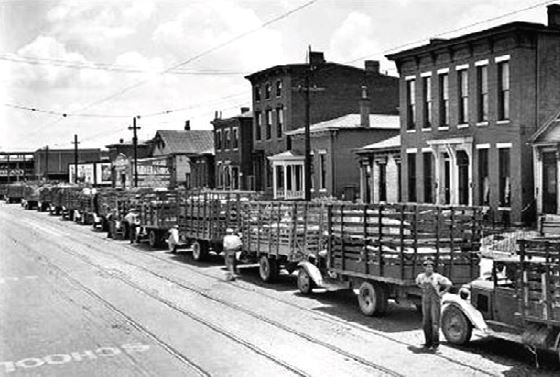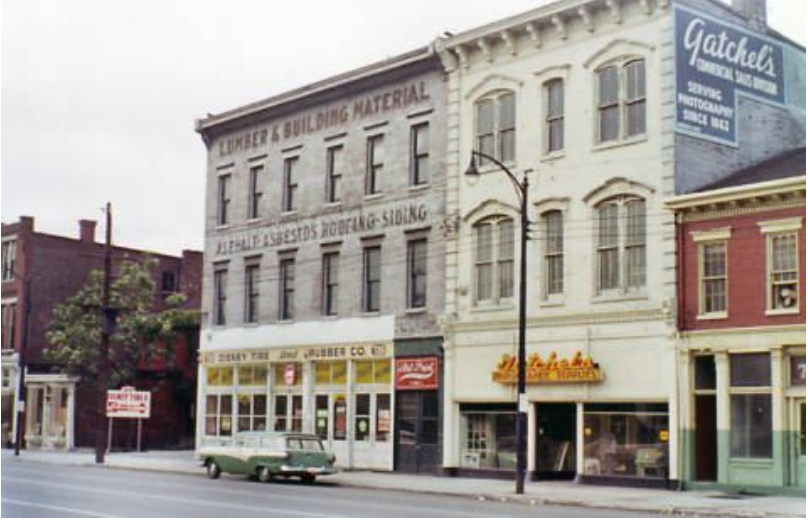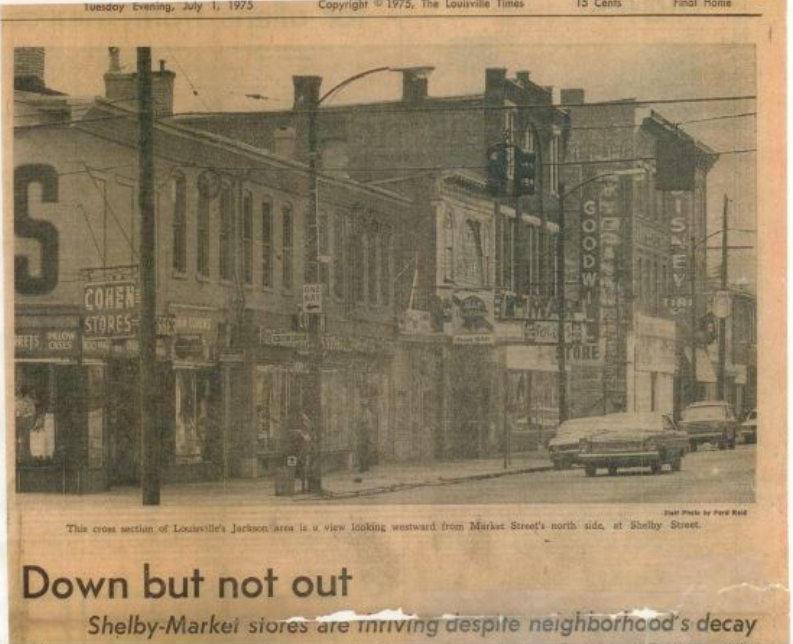|
History of NULU
Market Street is one of four major corridors inextricably intertwined with the history and development of Louisville; the earliest map of the city identifies Water, Main, Market and Jefferson Streets. In this section of the map you can clearly see the 800 block of Market between Shelby and Campbell. In 1804 the first Market house was established at Fourth and Market. The first brick house built in Louisville was constructed on the south side of Market between 5th and 6th Streets. During the 1820s the street was the scene of impromptu horse racing.
During the early part of the 19th century Market Street was the common address for retailers and service industries supporting Louisville’s development as a center for regional commerce. The thoroughfare was the heart of the development of the city as a livestock market with herds of livestock in constant travel along Market between the Bourbon Stockyards and the river. During mid-century, the increased traffic along Market necessitated widening the street to accommodate the great variety of traveling merchants and products.
Three block long sections of Market, between Floyd and Preston, Campbell and Shelby and Sixteenth and Seventeenth Streets were widened, and several market houses were established. As part of this development a small park was established on Market Street between Shelby and Campbell. Named Kenton Place, the park ran the entire length of the block. However, by 1905 the park had been removed and a trolley traveled the center of the street through the late 1940’s. The adjacent, rapidly growing neighborhoods of Butchertown and Phoenix Hill and the Bourbon Stockyards at the east end of Market insured that Market Street was a vital artery of commerce. The 1852 City Directory noted “the entire extent of this street is given up to retail grocers, provisions dealers, and clothiers”; almost everything purchased in Louisville, either was produced or sold on Market or Main Streets. During the last half of the 19th through the early 20th century, at the beginning of the era of the great department store, three major Louisville retailers, Levy Brothers, Bacon’s, and Loevenhart’s opened for business on Market Street.
|
The historic integrity of Market Street remains today, supported by an eclectic mix of retail shops, art galleries, restaurants and businesses. The diversity of this neighborhood is evidenced by the historic fabric that exists today along this corridor. This fabric is rich in historic design, materials and details; featuring brick, limestone and cast iron. During the nineteenth century Market Street was an important center of commerce and industry. Like many other urban historic business districts during the 1960s and 1970s it experienced a decline when competition from new commercial shopping areas began to be developed in the suburbs. However, Market has learned to reinvent itself and has become a unique destination. This strength is evident by the establishment, in 1991, of the East Downtown Businessman’s Association (now the NULU Business Association) whose goal is to work together toward revitalization and continuing commercial and residential development of the area, with a focus on historic preservation and sustainability.
|  |




